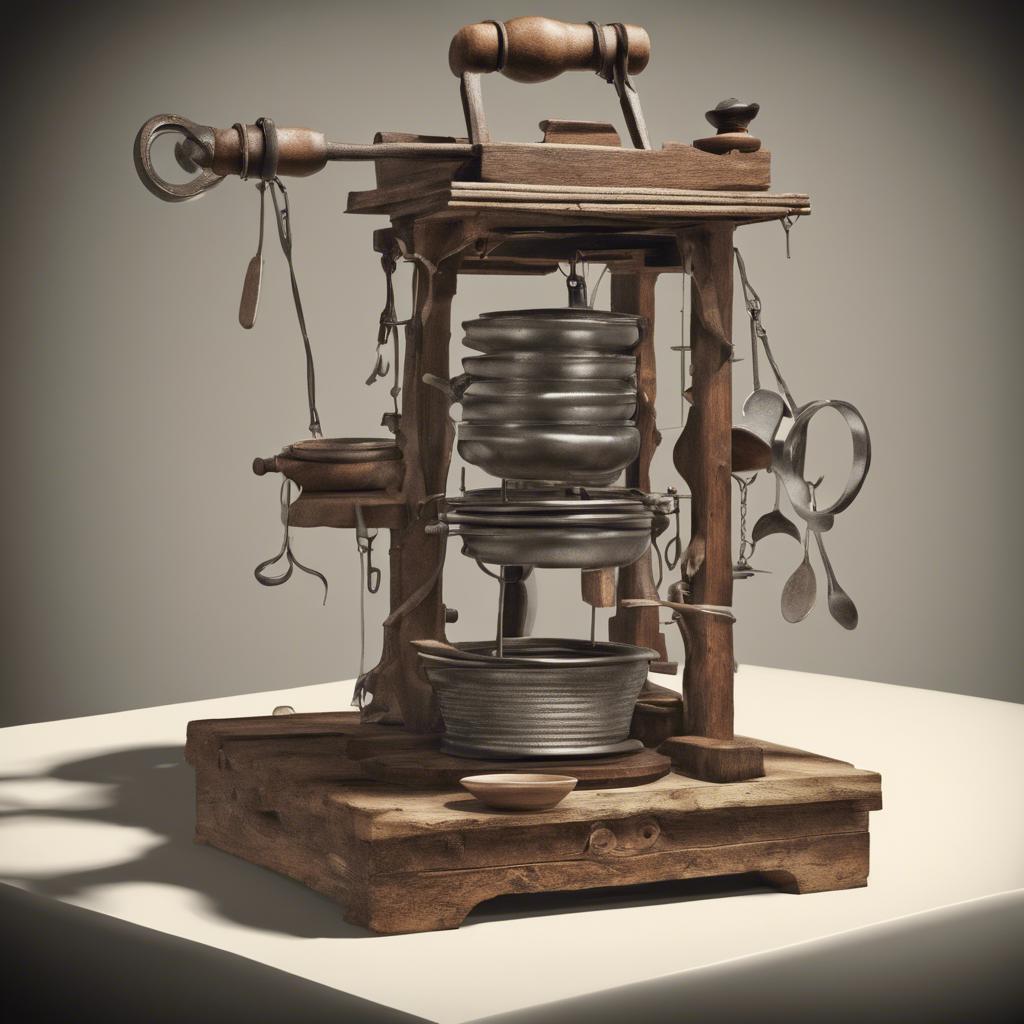In the annals of culinary history, the turnspit occupies a unique and often overlooked role. This humble kitchen implement, employed to roast meats over an open fire, was an indispensable fixture for centuries in the households of both nobility and commoners alike. Evoking an era when fire was the primary source of cooking heat and ingenuity was essential in the kitchen, the turnspit stands as a testament to the practical skills and resourcefulness of our ancestors. Join us as we explore the fascinating history and enduring legacy of the turnspit.
Step Into the World of Cheryl Bolen
Dive into the enchanting stories of love, intrigue, and elegance set in the Regency Era. Cheryl Bolen's novels offer timeless romance and captivating tales that will leave you wanting more.
Explore Cheryl Bolen's Books Now
Origins of the Turnspit: Unveiling the History of a Culinary Artifact
The turnspit, also known as the dog wheel, is a fascinating culinary artifact with a rich history dating back to the 16th century. Originating in Europe, especially in Great Britain, this ingenious contraption was used in kitchens to roast meats over an open fire. The turnspit consisted of a large wheel that was connected to a spit, allowing the meat to rotate slowly and cook evenly.
Historians believe that the turnspit was primarily operated by small dogs, specifically bred for this purpose. These dogs were trained to run inside the wheel, causing it to turn and rotate the spit. This unique arrangement allowed cooks to focus on other tasks in the kitchen while the meat roasted to perfection over the fire. The use of turnspits became quite common in wealthy households and inns during this time period.
Over the years, the turnspit fell out of favor as advancements in kitchen technology led to the development of more efficient roasting methods. However, the legacy of the turnspit lives on in culinary history, offering a glimpse into the ingenuity and creativity of cooks and chefs of the past. Today, the turnspit remains a symbol of the evolution of kitchen tools and techniques, reminding us of the important role they play in shaping the way we cook and eat.
Reviving the Lost Art: Exploring the Role of Turnspits in Traditional Cooking
Turnspits, also known as cooking dogs, were an essential component of traditional kitchens in centuries past. These small, low-to-the-ground dogs were specially bred for their ability to turn roasting spits, ensuring that meats cooked evenly over an open fire. Their role in the culinary world was vital, as they provided a consistent and reliable source of heat for cooking.
Despite their importance, turnspits have largely disappeared from modern kitchens, replaced by electric or gas-powered rotisseries. However, there has been a recent resurgence of interest in this age-old cooking method, as chefs and food enthusiasts seek to reconnect with the traditions of the past. Reviving the lost art of turnspit cooking offers a unique opportunity to explore the historical roots of culinary practices and rediscover the flavors of yesteryear.
By exploring the role of turnspits in traditional cooking, we gain a deeper appreciation for the craftsmanship and skill that went into preparing meals in the past. The use of turnspits not only provided a practical solution for roasting meats but also added a touch of ceremony to the dining experience. As we look back on the days when cooking dogs were a common sight in kitchens around the world, we are reminded of the rich tapestry of culinary history that has shaped our modern gastronomic practices.
Modern Applications of Turnspits: Enhancing Culinary Techniques with Traditional Tools
Turnspits, also known as roasting jacks, have been a staple in culinary history for centuries. These traditional tools were used to rotate meats over an open flame, ensuring even cooking and a delicious end result. While turnspits may seem like outdated relics of the past, modern chefs are finding innovative ways to incorporate them into their culinary techniques.
One modern application of turnspits is in the realm of rotisserie cooking. By utilizing a traditional turnspit mechanism, chefs can achieve a perfectly roasted chicken or pork loin with a crisp, flavorful skin. The slow rotation of the meat over a steady flame allows for even cooking and retention of juices, resulting in a succulent and tender dish that is sure to impress diners.
Another way modern chefs are enhancing their culinary skills with turnspits is by using them to roast vegetables. By placing a variety of veggies on a turnspit and slowly rotating them over a fire or grill, chefs can achieve a delicious char and smoky flavor that can’t be replicated with traditional cooking methods. This innovative use of turnspits adds a unique twist to vegetable dishes and elevates the overall dining experience.
Preserving Culinary Heritage: Incorporating Turnspits in Contemporary Kitchens
Incorporating turnspits in contemporary kitchens can serve as a way to preserve our culinary heritage and reconnect with ancient cooking techniques. These mechanical contraptions were once commonly used in grand kitchens of the past to turn roasting spits over open fires, ensuring even cooking of meats. By reintroducing turnspits into modern kitchens, we can honor the traditions of our ancestors and appreciate the craftsmanship of these historical devices.
Imagine the aroma of a perfectly roasted joint of meat slowly cooking over an open fire, with the gentle whirring sound of a turnspit mechanism in the background. Incorporating turnspits in contemporary kitchens can not only enhance the flavor of roasts but also create a unique and memorable dining experience for guests. It brings a touch of nostalgia and historical charm to the culinary setting, making it more than just a meal but a cultural journey through time.
By embracing turnspits in our modern kitchens, we can pay tribute to the long-forgotten art of traditional roasting and preserve a vital aspect of our culinary heritage. Whether it’s for a special occasion or a regular family dinner, incorporating these historical devices can add a sense of authenticity and craftsmanship to the cooking process. Let’s bring back the turnspit into our kitchens and keep the flame of our culinary past alive for future generations to savor and appreciate.
Concluding Remarks
the turnspit was an integral part of kitchens in the past, providing the necessary labor to cook food over an open fire. While their role may have been physically demanding and often underappreciated, turnspits played a crucial role in the culinary landscape of their time. As we look back on the history of this now-obsolete profession, we gain a deeper appreciation for the ingenuity and resourcefulness of those who worked tirelessly behind the scenes to keep the fires burning and the meals cooking. The turnspit may be a relic of the past, but its legacy lives on in the evolution of modern cooking techniques and the enduring, timeless tradition of preparing and sharing meals with loved ones.


